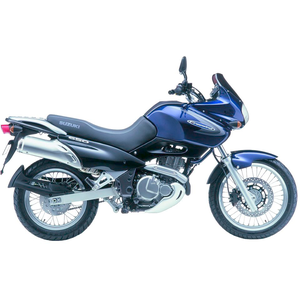Suzuki XF 650 Freewind (1997–2002): The Underrated All-Rounder That Still Turns Heads
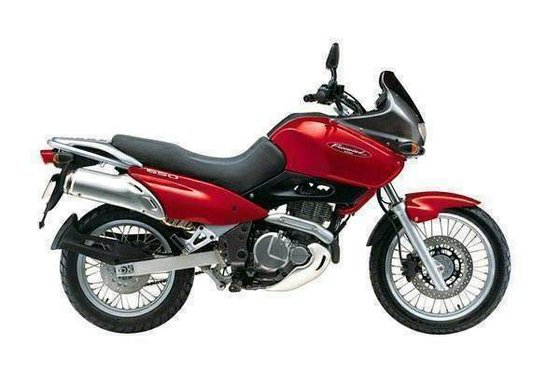
Introduction
The Suzuki XF 650 Freewind is one of those motorcycles that quietly redefines expectations. Produced from 1997 to 2002, this air-cooled single-cylinder adventurer was Suzuki’s answer to the growing demand for versatile, lightweight machines that could handle both urban commutes and weekend trail rides. While it never achieved the cult status of its sibling, the DR650, the Freewind carved out a niche as a pragmatic, no-nonsense companion for riders who refused to be pigeonholed into one riding style.
With its 644 cc thumper, approachable seat height, and surprising on-road manners, the Freewind remains a compelling option for riders seeking a jack-of-all-trades machine. Let’s dive into what makes this Suzuki a hidden gem.
Riding Experience: Where the Freewind Shines
The Heartbeat: A Refined Single-Cylinder
At the core of the Freewind is Suzuki’s 644 cc SOHC engine, borrowed from the DR650 but retuned for smoother road manners. Producing 48 HP (35 kW) at 7,000 RPM and 52 Nm (38.4 lb-ft) of torque at 5,500 RPM, this air-cooled single feels surprisingly refined. Unlike traditional thumpers, the Freewind’s engine employs a balancer shaft to minimize vibrations, making it one of the smoothest singles of its era.
On the road, the Freewind pulls eagerly from low revs, with a linear power delivery that’s forgiving for beginners yet engaging enough for seasoned riders. The 5-speed gearbox shifts crisply, though the tall gearing (15/43 sprockets) prioritizes highway comfort over explosive acceleration. Cruising at 110 km/h (68 mph) feels effortless, with minimal buzz through the bars.
Off the beaten path, the Freewind’s 200 mm (7.9 inches) of ground clearance and 19-inch front wheel tackle gravel roads with confidence. It’s no hardcore enduro—the 180 kg (397 lbs) wet weight and road-biased suspension limit extreme trail work—but for fire roads and light adventures, it’s more than capable.
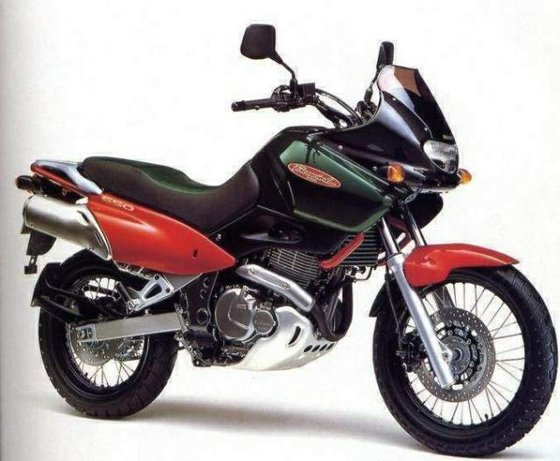
Handling: Agile, Predictable, and Fun
Suzuki nailed the ergonomics here. The 810–850 mm (31.9–33.5 inches) seat height accommodates shorter riders, while the wide handlebars offer leverage for tight maneuvers. The suspension—43 mm telescopic forks up front and a Full Floater monoshock at the rear—is tuned for comfort, absorbing potholes without wallowing in corners.
Push it on a twisty road, and the Freewind surprises with its agility. The 1465 mm (57.7-inch) wheelbase and 100/90-19 front tire provide stability mid-corner, while the chassis encourages playful leans. Ground clearance is generous, though the footpegs will scrape before you run out of tire.
Daily Usability: Commuter-Friendly
- Fuel Efficiency: Averaging 5.6 L/100 km (42 MPG US), the 18.5 L (4.9-gallon) tank delivers a 330 km (205-mile) range.
- Comfort: The upright riding position and plush seat make hour-long rides a breeze. The half-fairing deflects wind effectively at highway speeds.
- Tech Quirk: The full LCD dashboard—a rarity in the ’90s—remains legible in direct sunlight and adds a retro-futuristic charm.
Design and Build Quality: Form Meets Function
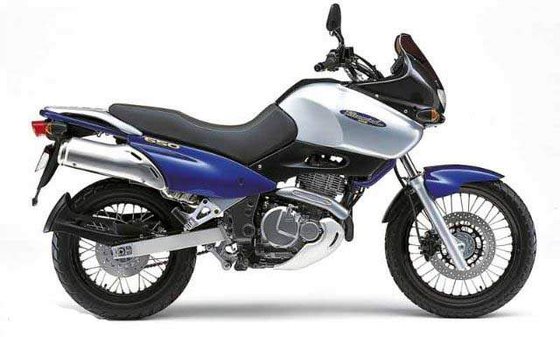
The Freewind’s styling splits opinions. Some see a quirky fusion of supermoto and touring bike; others admire its Euro-inspired curves. The bodywork is minimalist yet functional, with a streamlined fairing and high-mounted fenders that hint at off-road capability. Build quality is typical Suzuki—durable but not luxurious. Paint holds up well, though the plastic panels can show wear after years of abuse.
Standout Features:
- LCD Instrument Cluster: Digital speedometer, analog-style tach bar, and fuel gauge.
- Adjustable Suspension: Preload settings cater to solo or two-up riding.
- Dual-Sport Tires: OEM Pirelli MT80s strike a balance between road grip and loose-surface traction.
Competition: How Does the Freewind Stack Up?
The late ’90s/early 2000s adventure segment was dominated by three key rivals:
1. BMW F650 Funduro
- Pros: Fuel injection, lighter weight (156 kg), and BMW’s prestige.
- Cons: Higher maintenance costs, less low-end torque.
- Freewind Edge: Smoother engine, lower price point, and simpler carbureted setup for DIY repairs.
2. Honda XR650L
- Pros: Legendary reliability, true off-road prowess.
- Cons: Sparse road-focused features, harsh seat.
- Freewind Edge: Better highway manners, superior comfort.
3. Yamaha XT660Z Ténéré
- Pros: Modern tech (fuel injection), larger fuel tank.
- Cons: Heavier, taller seat.
- Freewind Edge: Lighter, more nimble in urban settings.
Verdict: The Freewind isn’t the best at any one thing, but its blend of affordability, versatility, and Suzuki reliability makes it a standout for riders who value practicality over pedigree.
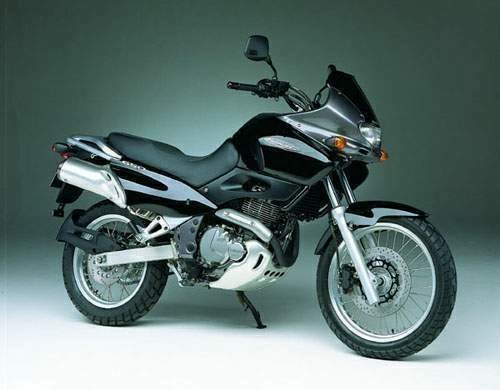
Maintenance: Keeping Your Freewind in Prime Condition
Owning a 20+ year-old motorcycle means staying vigilant with upkeep. Here’s what to prioritize:
1. Valve Adjustments
- Intake: 0.08–0.13 mm (0.003–0.005 in)
- Exhaust: 0.17–0.22 mm (0.006–0.008 in)
- Frequency: Every 6,000 km (3,700 miles). Use a feeler gauge and MOTOPARTS.store’s valve shim kit for precision.
2. Oil Changes
- Capacity: 2.4 L (2.5 quarts) with filter.
- Recommended Oil: SAE 10W-40 (API SF or higher). Try MOTOPARTS.store’s synthetic blend for smoother cold starts.
3. Carburetor Tuning
- The stock Mikuni BST32 carb benefits from periodic cleaning. Adjust the air screw (3 turns out) and consider a jet kit for altitude adjustments.
4. Chain and Sprockets
- The 110-link chain and 15/43 sprockets wear quickly if neglected. MOTOPARTS.store’s X-Ring chain kit reduces maintenance intervals.
5. Brake Fluid
- Flush with DOT 4 fluid annually. Upgrade to braided steel lines for firmer lever feel.
6. Tire Pressures
- Road Use: 1.75 bar front (25 psi), 2.25 bar rear (33 psi).
- Off-Road: Drop to 1.5 bar (22 psi) front/rear for better traction.
Final Thoughts: Why the Freewind Deserves a Second Look
The Suzuki XF 650 Freewind is a motorcycle that rewards those who value substance over hype. It’s not the fastest, lightest, or most glamorous bike, but its honest character and bulletproof mechanics make it a joy to own. Whether you’re threading through city traffic, carving backroads, or exploring dirt trails, the Freewind delivers a grin-inducing ride without breaking the bank.
For owners looking to refresh their Freewind, MOTOPARTS.store offers everything from OEM-spec replacement parts to performance upgrades. Because even the most reliable machines deserve a little love.
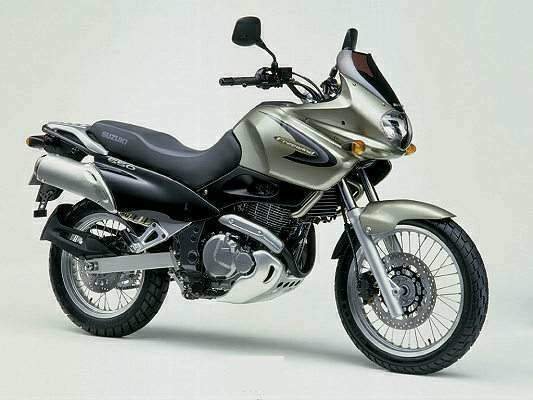



Specifications sheet
| Engine | |
|---|---|
| Stroke: | Four-stroke |
| Max power: | 48 kW | 64.0 hp |
| Max torque: | 52 Nm |
| Fuel system: | 2 x 32 mm Mikuni carburetors |
| Max power @: | 7000 rpm |
| Displacement: | 644 ccm |
| Max torque @: | 5500 rpm |
| Bore x Stroke: | 100 x 82 mm |
| Configuration: | Single |
| Cooling system: | Air/oil cooled |
| Compression ratio: | 9.5:1 |
| Number of cylinders: | 1 |
| Valves per cylinder: | 4 |
| Dimensions | |
|---|---|
| Wheelbase: | 1465 mm (57.7 in) |
| Dry weight: | 168 |
| Wet weight: | 180 |
| Seat height: | 800–850 mm (31.5–33.5 in) adjustable |
| Overall width: | 865 mm (34.1 in) |
| Overall height: | 1230 mm (48.4 in) |
| Overall length: | 2205 mm (86.8 in) |
| Ground clearance: | 200 mm (7.9 in) |
| Fuel tank capacity: | 18.5 L (4.9 US gal) |
| Drivetrain | |
|---|---|
| Final drive: | chain |
| Chain length: | 110 |
| Transmission: | 5-speed |
| Rear sprocket: | 43 |
| Front sprocket: | 15 |
| Maintenance | |
|---|---|
| Rear tire: | 130/80-17 |
| Engine oil: | 10W40 |
| Front tire: | 100/90-19 |
| Brake fluid: | DOT 4 |
| Spark plugs: | NGK CR10EK or NGK CR10EIX |
| Spark plug gap: | 0.7 |
| Forks oil capacity: | 1.31 |
| Engine oil capacity: | 2.4 |
| Engine oil change interval: | Every 5000 km or 2 years |
| Valve clearance (intake, cold): | 0.08–0.13 mm |
| Valve clearance check interval: | 24,000 km / 15,000 mi |
| Valve clearance (exhaust, cold): | 0.17–0.22 mm |
| Recommended tire pressure (rear): | 2.0 bar (29 psi) solo / 2.25 bar (32.6 psi) with passenger |
| Recommended tire pressure (front): | 1.75 bar (25.4 psi) |
| Performance | |
|---|---|
| Top speed: | 167.8 km/h (104.3 mph) |
| 0-100 km/h: | 4.9 seconds |
| Fuel consumption: | 5.3 L/100 km (44.4 mpg) |
| Chassis and Suspension | |
|---|---|
| Frame: | Lowered dual-purpose frame |
| Rear wheel: | 3.00 x 17 |
| Front wheel: | 2.50 x 19 |
| Rear brakes: | Single 240 mm disc |
| Front brakes: | Single 300 mm disc |
| Rear suspension: | Full Floater monoshock, adjustable spring preload and damping |
| Front suspension: | Telescopic fork, oil-damped |
| Rear wheel travel: | 167 mm (6.6 in) |
| Front wheel travel: | 170 mm (6.7 in) |



